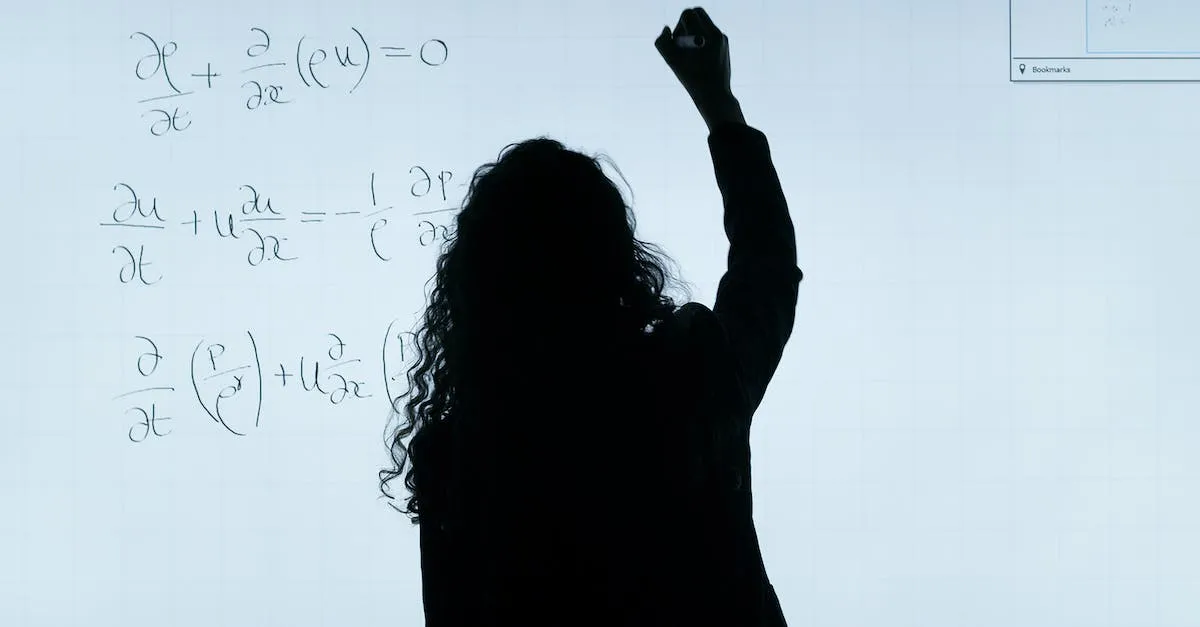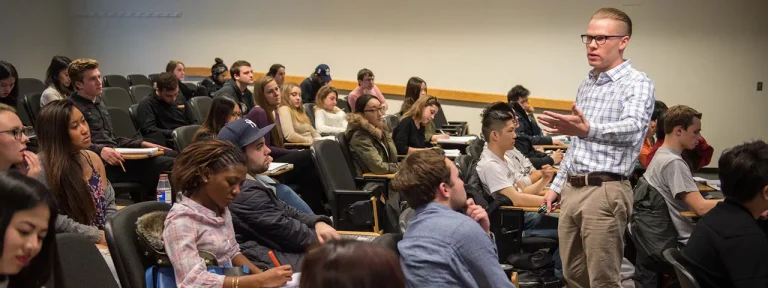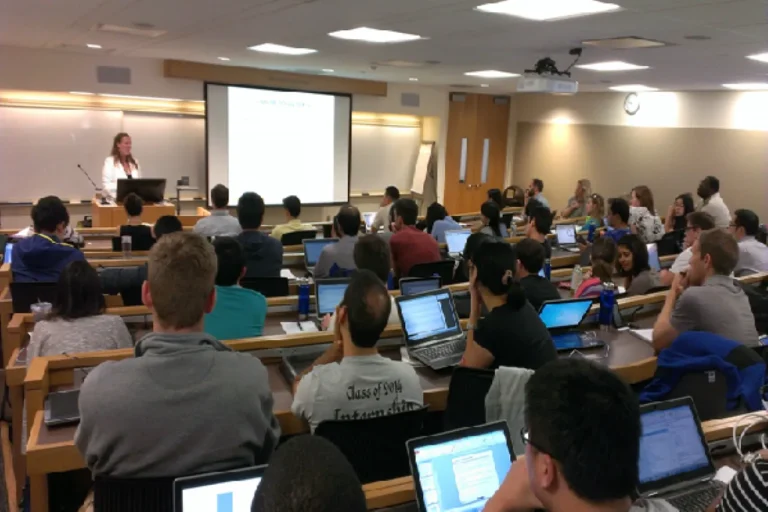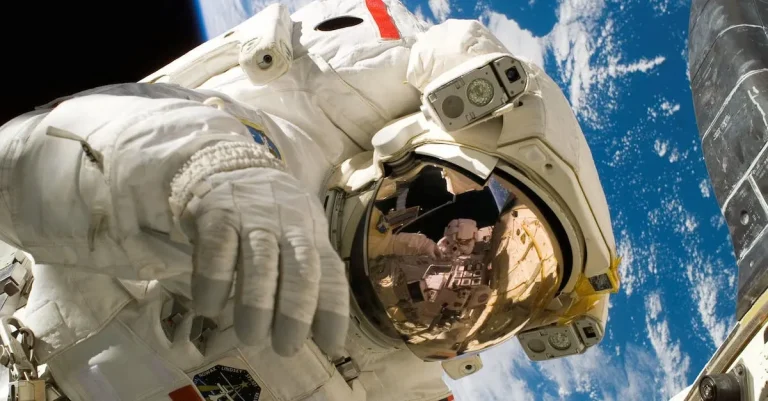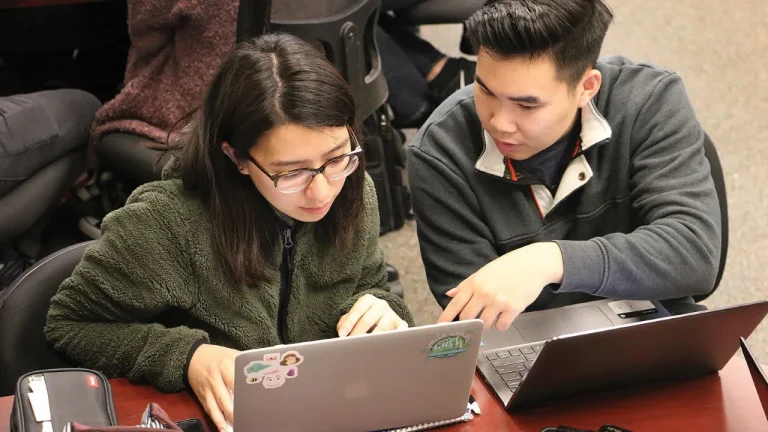The Deep Connection Between Math And Science
Math and science: at first glance, they seem like very different disciplines. But look closer, and you’ll find an intricate relationship underpinning discoveries from physics to genetics.
In this comprehensive 3000 word guide, we’ll unravel the integral ties between mathematics and scientific advancement. We’ll look at real-world examples of how mathematical reasoning informs scientific theory and vice versa.
You’ll gain an appreciation for how these two pillars of human knowledge depend on and enrich each other.
How Math Enables Science
Math and science are deeply intertwined, with mathematics serving as a fundamental tool that enables scientific discoveries and advancements. It provides scientists with the language and tools necessary to understand and explain the natural world.
Without math, our understanding of scientific concepts would be limited, and many scientific breakthroughs would not have been possible.
Math as the language of science
Mathematics is often referred to as the language of science because it allows scientists to express complex ideas and theories in a precise and concise manner. Just as language is essential for communication, mathematics plays a crucial role in communicating scientific concepts and theories.
It provides scientists with a common framework to express and share their findings, ensuring that scientific knowledge is universally understood.
One example of math as the language of science is found in the field of physics, where mathematical equations and models are used to describe the behavior of particles, forces, and the laws of motion.
The famous equation E=mc², derived by Albert Einstein, revolutionized our understanding of energy and mass, and it is a prime example of how mathematics can capture and explain complex scientific phenomena.
Examples of mathematical theories leading to scientific discoveries
Throughout history, mathematical theories have often paved the way for significant scientific discoveries. For instance, the theory of relativity, developed by Einstein, was a profound mathematical concept that led to groundbreaking advancements in physics.
This theory provided a new understanding of space, time, and gravity, and it has been confirmed by numerous scientific experiments and observations.
Another example is the field of genetics, where mathematical models and statistical analysis have played a crucial role in understanding patterns of inheritance and evolution. By applying mathematical principles, scientists have been able to unravel the complexity of DNA sequences, predict genetic outcomes, and develop life-saving treatments.
Math as a tool for modeling natural phenomena
Mathematics is not only used to describe scientific concepts but also serves as a powerful tool for modeling and predicting natural phenomena. By using mathematical equations and algorithms, scientists can simulate and understand complex systems, such as weather patterns, population dynamics, and the behavior of celestial bodies.
For example, meteorologists use mathematical models to predict weather patterns, allowing us to plan our activities and make informed decisions. These models take into account various factors such as temperature, humidity, and atmospheric pressure, and they can accurately forecast weather conditions for specific regions and timeframes.
How Science Drives Mathematics
The relationship between mathematics and science is deeply intertwined, with each field constantly influencing and driving advancements in the other. Science provides the real-world problems and questions that inspire new mathematical theories and concepts.
By tackling these challenges, mathematicians develop innovative methods and tools that further enhance scientific understanding. This symbiotic relationship between math and science has led to significant breakthroughs and advancements in both disciplines.
Scientific questions inspiring new mathematics
Scientific discoveries often give rise to new mathematical theories and concepts. For example, when physicists discovered quantum mechanics, a branch of physics that deals with the behavior of particles at the atomic and subatomic level, it posed numerous mathematical challenges.
Mathematicians had to develop new mathematical frameworks, such as complex analysis and linear algebra, to understand and model the intricate properties of quantum systems. This collaboration between physics and mathematics has led to significant advancements in both fields and has paved the way for technological innovations like quantum computing.
Real-world problems advancing mathematical thinking
Real-world problems and challenges faced by scientists often require mathematical tools and techniques to solve them. For instance, in the field of epidemiology, mathematical models are used to predict the spread of diseases and develop strategies for prevention and control.
These models rely on mathematical concepts such as differential equations, probability theory, and optimization techniques. As scientists encounter new and complex problems, mathematicians are pushed to develop new mathematical methods and theories to tackle these challenges.
This constant interplay between math and science fuels innovation and drives progress in both disciplines.
Computing and the symbiotic math-science relationship
The advent of computing has further strengthened the bond between mathematics and science. The development of powerful computers and sophisticated algorithms has enabled scientists to perform complex simulations and data analysis on an unprecedented scale.
These computational challenges have driven the development of new mathematical techniques, such as numerical methods and optimization algorithms, to efficiently solve these problems. On the other hand, mathematics provides the foundation for computer science and the algorithms used in various scientific fields.
The close relationship between mathematics and computer science has led to remarkable advancements in areas like artificial intelligence, machine learning, and data science.
Shared Processes of Math and Science
Observing patterns through experimentation/exploration
One of the fundamental processes that both math and science share is observing patterns through experimentation and exploration. In the scientific method, scientists conduct experiments to gather data and observe patterns or trends that may emerge.
Similarly, mathematicians explore different mathematical concepts and patterns to identify relationships between numbers or variables. For example, in the field of statistics, mathematicians analyze data sets to identify trends and make predictions based on those patterns.
This process of observation and exploration allows both math and science to uncover new knowledge and make advancements in their respective domains.
Formulating hypotheses and theorems
Another shared process between math and science is the formulation of hypotheses and theorems. In science, hypotheses are formulated based on observations and existing knowledge, and they serve as explanations or predictions for specific phenomena.
Similarly, mathematicians formulate theorems, which are statements that are proven to be true using logical reasoning and existing mathematical principles. These hypotheses and theorems serve as the foundation for further experimentation and exploration in both math and science.
They provide a framework for testing and validating ideas, leading to a deeper understanding of the subject matter.
Proving or disproving through logic and testing
Once hypotheses or theorems are formulated, both math and science rely on the process of proving or disproving them through logic and testing. In science, experiments are designed to test the validity of a hypothesis, and the results either support or refute the initial claim.
Similarly, mathematicians use logical reasoning and mathematical proofs to verify the truth of a theorem. By subjecting their ideas to rigorous testing, both math and science aim to establish the credibility and accuracy of their findings.
It is worth noting that both math and science complement each other in many ways. For example, math provides the tools and language for scientists to quantify and analyze data, while science provides real-world applications and contexts for mathematical concepts.
This deep connection between math and science highlights the interdependence of these disciplines and the importance of their collaboration in advancing knowledge.
Overlapping Fields Applying Math and Science
The fields of math and science are deeply interconnected, with each one relying on the other to advance knowledge and understanding. The use of mathematics in scientific research and experimentation is crucial for making accurate predictions and analyzing complex data sets.
Similarly, science provides the real-world context for mathematical theories and concepts to be tested and applied. Let’s explore how math and science overlap in specific fields.
Physics: Understanding the world through math
Physics is often referred to as the fundamental science because it seeks to explain the behavior of matter and energy in the universe. It relies heavily on mathematical models and equations to describe and predict the behavior of physical phenomena.
From classical mechanics to quantum physics, mathematics is the language through which scientists understand and communicate the laws of nature.
For example, Isaac Newton’s laws of motion are expressed through mathematical equations that describe how objects move and interact with one another. These equations allow physicists to make precise predictions about the motion of planets, the behavior of fluids, and the properties of electromagnetic waves.
Furthermore, advanced mathematical concepts such as calculus and differential equations are essential tools for modeling complex systems in physics. They enable scientists to analyze the behavior of particles at the quantum level, understand the forces that govern the behavior of stars, and even predict the existence of previously unknown particles.
Engineering: Building things based on scientific truths
Engineering is the practical application of scientific knowledge and principles to design and build structures, machines, and systems that solve real-world problems. It relies on the understanding of scientific truths and the use of mathematical calculations to ensure the safety, efficiency, and functionality of the designed solutions.
Engineers utilize mathematical concepts such as algebra, geometry, and trigonometry to analyze and design structures, calculate load capacities, and determine optimal dimensions. For example, civil engineers use mathematical formulas to calculate the strength and stability of bridges, while aerospace engineers use mathematical models to design efficient aircraft wings.
Moreover, engineers often rely on computer simulations and mathematical models to test and optimize their designs before they are actually built. This allows them to predict the performance of a structure or system under various conditions and make informed decisions about the design parameters.
Computer Science: Using algorithms to analyze data
Computer science is a field that combines mathematics and technology to solve complex problems and process large amounts of data. It relies on mathematical algorithms to analyze, manipulate, and extract meaningful information from data sets.
Mathematical concepts such as logic, set theory, and graph theory are essential tools in computer science. They are used to develop algorithms that solve problems efficiently and make sense of complex data structures.
For example, algorithms based on graph theory are used to optimize network routing, while algorithms based on linear algebra are used in image processing and machine learning.
Additionally, statistical analysis plays a crucial role in computer science, as it allows programmers and data scientists to make sense of large data sets and draw meaningful conclusions. Statistical concepts like probability theory and hypothesis testing are used to analyze data and make predictions.
Cultivating Interconnected Math and Science Skills
Math and science are often viewed as separate subjects in education, but they are deeply interconnected. By integrating math and science education, students can develop a range of valuable skills that will serve them well in both academic and real-life settings.
Developing problem-solving abilities
Math and science share a common foundation in problem-solving. Both subjects require students to analyze information, identify patterns, and apply logical reasoning to find solutions. By engaging in math and science activities, students can enhance their problem-solving abilities and develop a systematic approach to tackling complex problems.
For example, when solving a physics problem, students must apply mathematical principles to analyze the problem, identify relevant variables, and derive equations to find the solution. This process requires critical thinking and the ability to connect math concepts to real-world scenarios.
Teaching logical reasoning and critical thinking
Mathematics and science are disciplines that demand logical reasoning and critical thinking skills. In math, students learn to construct logical arguments and evaluate the validity of mathematical statements.
In science, students engage in hypothesis testing, data analysis, and drawing conclusions based on evidence.
By integrating math and science education, students can develop these crucial skills in a cohesive manner. For instance, when conducting a scientific experiment, students must use critical thinking to design a methodology, collect and analyze data, and draw logical conclusions.
The ability to think critically and reason logically is essential for success in both math and science.
Fostering curiosity and creativity
Math and science education can foster curiosity and creativity in students. Both subjects provide opportunities for exploration and discovery, encouraging students to ask questions, make connections, and think innovatively.
For instance, when exploring mathematical concepts like geometry or calculus, students can engage in creative problem-solving, finding multiple solutions or discovering new patterns. In science, students can conduct experiments, make observations, and draw conclusions, fostering creativity and innovation.
By combining math and science education, students can develop a holistic approach to learning, where creativity and curiosity are nurtured alongside analytical skills.
Conclusion
For centuries, math and science have worked symbiotically to profoundly expand human knowledge. Mathematical reasoning unlocks new scientific insights, while scientific wonders reveal new facets of mathematics.
By teaching our children to think quantitatively and scientifically, we can prepare them to tackle the next great intellectual challenges.
Math builds the foundational language of science, just as science reveals new horizons for mathematical exploration. This dynamic interchange will continue to push boundaries we cannot yet imagine.

